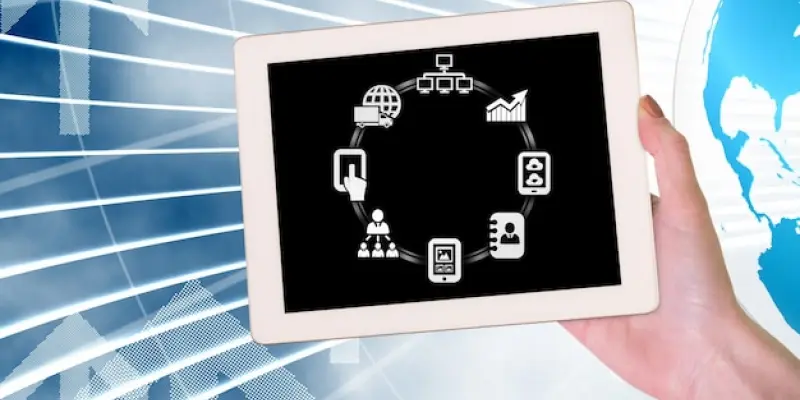In the rapidly evolving landscape of Human Resources technology, LinkedIn and Beamery have unveiled a pivotal integration that promises significant advances in efficiency and accuracy. By connecting Beamery’s AI-powered talent platform with LinkedIn Recruiter, the new LinkedIn CRM Connect aims to streamline recruiter workflows and transform hiring practices. This initiative reflects the continuing trend toward optimizing HR technology investments, with an emphasis on creating seamless user experiences within essential recruitment tools. Recruiters, who previously juggled between systems, manually managing candidate outreach and synchronizing information, now have a unified platform to reduce duplicated efforts and data inconsistencies. The integration is poised to be a game-changer, as more organizations seek to harness the full potential of their HR technology stack.
Streamlining Recruitment Workflows
The integration initiated by Beamery and LinkedIn focuses on creating a cohesive experience that enhances hiring efficiency. By enabling recruiters to export candidate profiles from LinkedIn directly into Beamery without any manual intervention, the collaboration eradicates the redundancy in tasks that often deter productivity. Additionally, it empowers HR professionals to access LinkedIn profiles while remaining within the Beamery platform, eliminating disruptive transitions between different interfaces. This innovation also automates the sync process for InMails and candidate updates, ensuring that data remains consistent and current across both platforms. By providing CRM insights from Beamery within LinkedIn Recruiter, the integration offers a singular location for recruiters to derive insights and manage their talent pipelines more effectively and swiftly. The partnership aims to provide a centralized hub for all recruiting activities, ultimately improving operational efficiency. By focusing on reducing the manual workload associated with data entry and synchronization, recruiters can dedicate more time to engaging with potential candidates. This reallocation of time enables HR teams to focus on high-value tasks, fostering stronger relationships with the most promising talent. In a competitive talent market, such advances can be invaluable, as they help organizations stand out in their recruitment efforts and forge meaningful connections with candidates.
Enhancing Data-Driven Decision Making
Beamery and LinkedIn’s collaboration underscores the industry’s move towards interconnected systems, allowing HR professionals to leverage data more effectively in decision-making processes. By linking talent data between platforms, recruiters are better equipped to refine their strategies and approaches to candidate engagement. This connectivity ensures that candidate profiles are not only visible but also consistent across different tools within the HR toolkit. It circumvents disjointed communication and helps maintain more precise and informed recruiting strategies. Furthermore, the integration aligns with analysts’ estimates highlighting that only a fraction of HR employees feel their organizations make full use of HR technology resources, pointing towards a significant opportunity to enhance return on investment.
The inclusion of advanced analytics and insights within this integration also addresses HR’s shift toward a more data-centric approach. Such a transformation enables businesses to strategize effectively, utilizing real-time analytics to fine-tune recruitment operations and make informed decisions swiftly. There is an industry-wide recognition that data-driven insights substantially improve the quality of hiring by mitigating biases and aligning candidate selection with organizational goals and values. As technologies evolve, the critical interplay between data and recruitment strategy continues to be reinforced, with Beamery and LinkedIn leading the charge in refining HR practices.
Embracing AI and Technology in Talent Acquisition
With the introduction of AI-driven solutions, this integration between LinkedIn and Beamery is resetting the benchmarks for what can be achieved in talent acquisition processes. The collaboration builds on the need for organizations to not just gather data but also extract actionable insights from it. This effort showcases an innovation-focused intent to move beyond traditional recruitment methodologies by granting recruiters access to connected skills and AI solutions early in the talent lifecycle. These improvements underscore a significant leap towards utilizing sophisticated technology to enhance equitable and informed decision-making practices.
Furthermore, customer feedback has highlighted the practical benefits of this comprehensive integration. Organizations, including industry leaders like Uber, have found that streamlining and unifying sourcing and CRM workflows delivers tangible advantages. These operational efficiencies are particularly relevant for companies aiming to optimize recruitment intelligence amid tightening budgets and increasing complexity of hiring challenges. The seamless integration provides recruiters with a tool that simplifies processes while maximizing technology investments, which is crucial for businesses navigating the shifting sands of today’s recruiting arena.
Leading the Charge in Recruitment Technology Innovation
Beamery and LinkedIn’s integration aims to craft an efficient hiring experience by streamlining workflows for recruiters. This partnership allows recruiters to import LinkedIn candidate profiles directly into Beamery, removing the redundancy of manual tasks that often hinder productivity. With recruiters able to access LinkedIn profiles while remaining within Beamery, they avoid disruptive toggling between different platforms. Furthermore, the synchronization of InMails and candidate updates is automated, ensuring data accuracy and consistency across both systems. Beamery provides CRM insights to LinkedIn Recruiter users, helping them effectively manage talent pipelines from a single location. This centralized hub for recruiting activities boosts operational efficiency by reducing manual data entry and synchronization efforts. Consequently, recruiters can invest more time engaging with candidates, allowing HR teams to focus on high-value tasks and foster robust relationships with promising talent. In a competitive job market, such enhancements are invaluable, aiding organizations in distinguishing themselves and establishing meaningful candidate connections.

